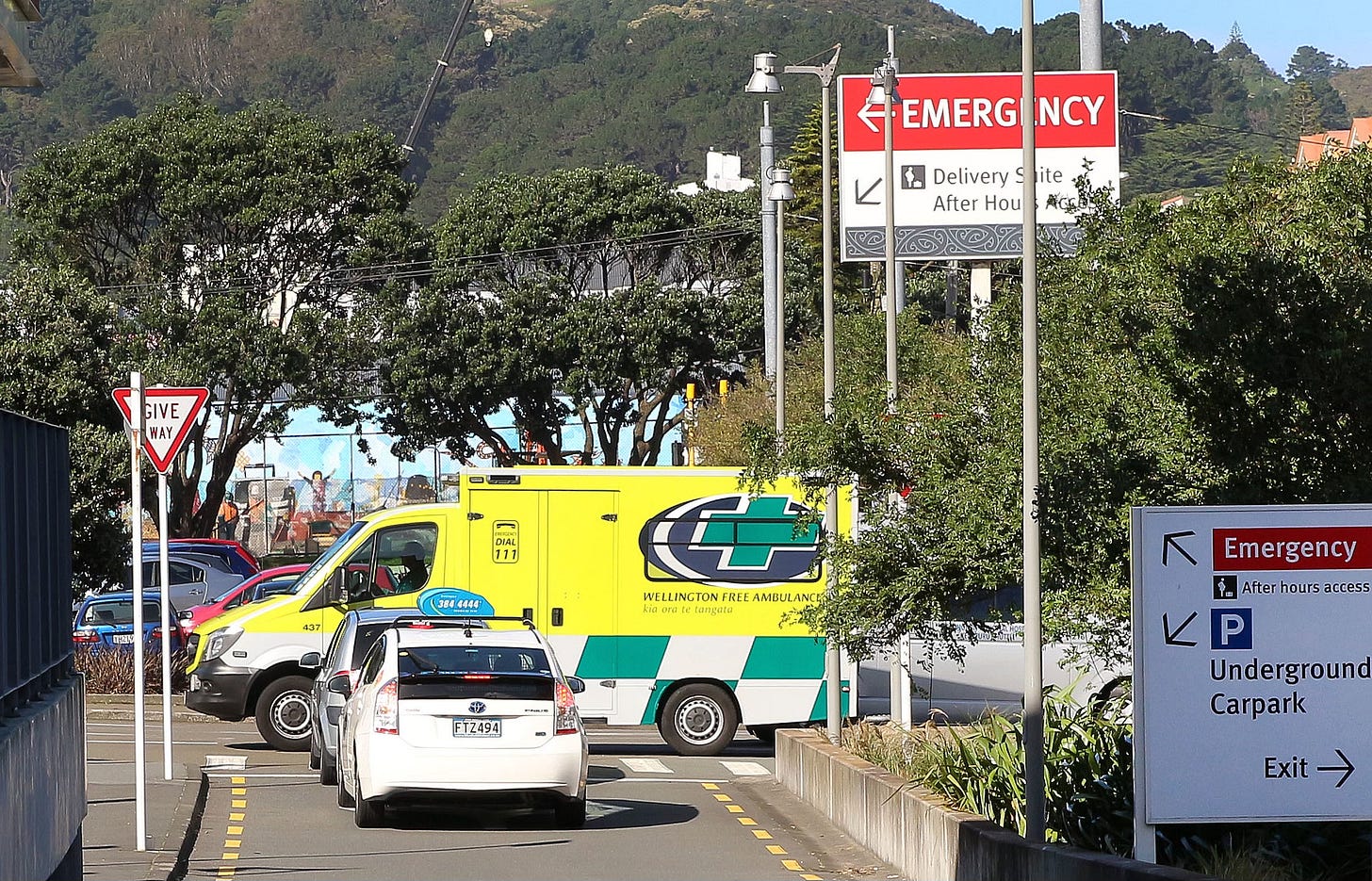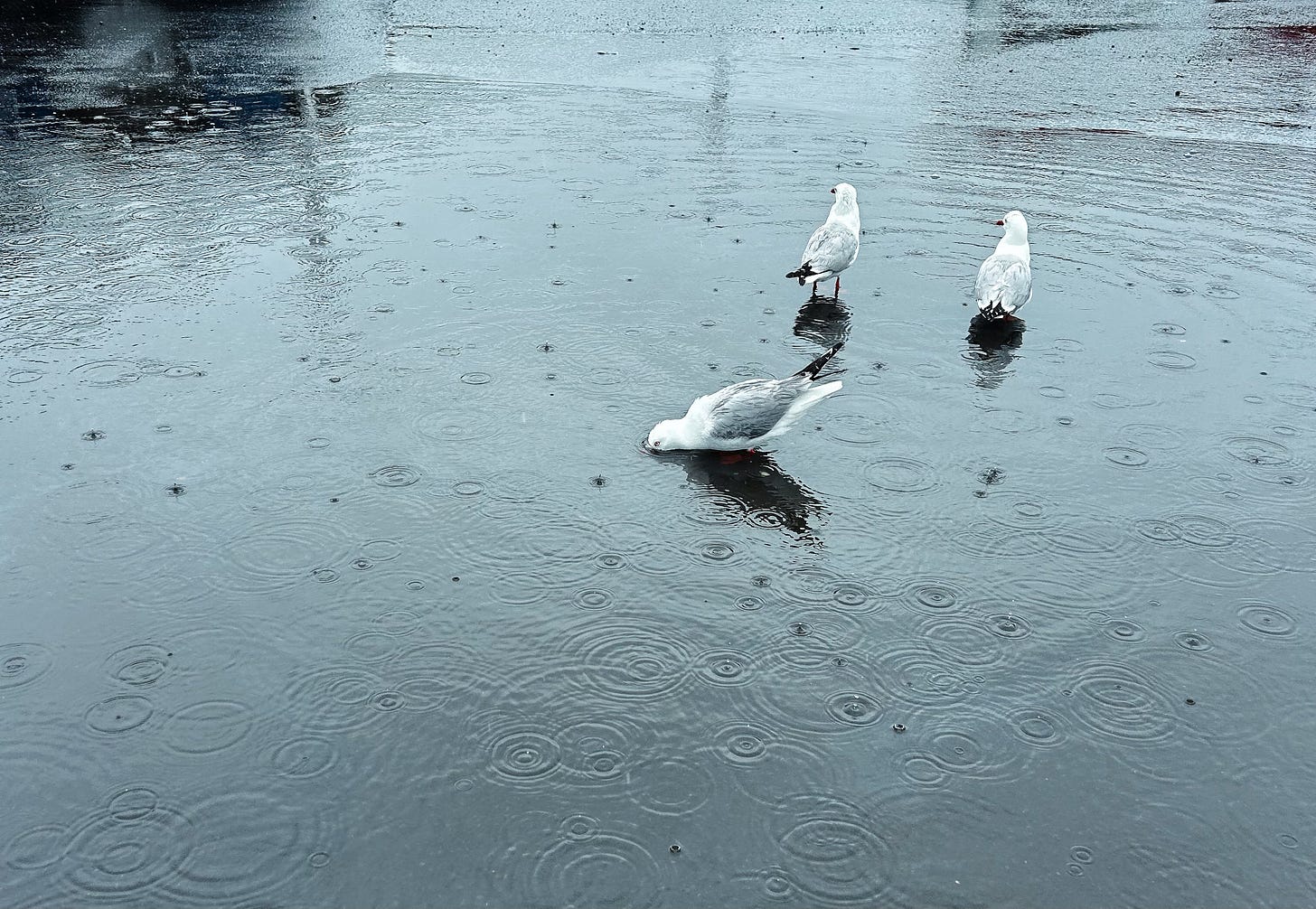
Long stories short, the top six things in Aotearoa’s political economy around housing, climate and poverty on Tuesday, February 18 are:
A NZ Herald investigation published yesterday into the performance of EDs has found almost a third of a million patients were not seen within the recommended times in the first half of last year;
ED doctor Gary Payinda pointed in his substack post yesterday at international research showing overcrowding and ‘bed blocking’ resulted in the deaths of one in every 83 patients stuck in EDs for more than eight hours, with the risk of death in an ED here rising by 10% if 10% of the emergency beds are taken up by patients unable to move out into hospital wards because of bed shortages;
Yet unnecessary and self-imposed Government funding constraints are limiting the numbers of new hospital beds, and the number nurses and doctors being trained, with news1 yesterday that 121 nurse practitioners are about to start training without any certainty of being funded;
Stats NZ data yesterday monthly net migration rose in December to a 12-month high of 3,810 from 2,140 in November as foreign arrivals rose for their fourth consecutive month and the rate of emigration by residents and citizens fell slightly for the month, although it remains around 200 per day;
Workers who grew up in Aotearoa (aged 18-30) made up 27,400 (38%) of the 72,000 migrant departures of New Zealand citizens in 2024, while workers (18-44) made up 84,000 (64%) of the 130,900 migrant arrivals of non-New Zealand citizens in 2024.; and,
Westpac NZ has doubled its forecast for net migration from 15,000 this year to 30,000 next year as even more workers on temporary work visas arrive to more-than-replace citizens leaving, and are arriving in a country where the Government is forecasting a 44% reduction in infrastructure spending over the next four years.
(Usually, there is more detail, analysis and links to documents below the paywall fold and in the podcast above for paying subscribers. Normally, if we get over 100 likes from paying subscribers we’ll open it up for public reading, listening and sharing. I’ve taken an executive decision to open this up from start due to the public interest involved.)
Inviting in more people before building more hospital rooms
The Government’s ‘going for growth’ strategy pivot this year is relying on ramping up cheap tourism revenues from Australia and China, and pulling on the lever to bring more migrant workers on temporary work visas.
Westpac is now expecting a doubling of net migration over the next year because of looser Government visa policies. The problem is the 30,000 expected is more than a third above the Stats NZ long-term population growth forecast and will happen as the Government is reducing its infrastructure spending by 44%, on top of a $104 billion deficit already there.
That’s evident in the scenes at the bottom of the cliff, as NZ Herald reported yesterday:
All of the country’s hospital emergency departments (EDs) are failing to assess patients with “imminently” or “potentially” life-threatening conditions on time – a trend senior doctors say is a “massive problem” which increases the chance of death.
More than 300,000 patients with time-critical conditions were not seen within recommended time frames during the first six months of last year, according to official information obtained exclusively by the Herald.
•Staff shortages, overcrowding, and hospital bed block contribute to delays, causing poor outcomes for patients and staff burnout
An analysis of official information obtained exclusively by the Herald has revealed the worst and best EDs when it comes seeing patients on time according to the Australasian Triage Scale – a best-practice standard followed by New Zealand’s EDs.
Health investigation: Watch: How does yours rate? The best and worst-performing hospital EDs in NZ revealed NZ Herald’s Michael Morrah and Chris Knox
Substack essentials elsewhere
Further reading
Today’s must read: Please read this enlightening and ultimately hopeful piece from
via E-Tangata. It’s a first-person reflection on the power of endowments in Aotearoa.My story is remarkably similar. My great-grandfather was given stolen land, which created the wealth that allowed my grandfather to build his farm on fraudulently-bought rehab land, which gave me privilege and resources to go to University fees-free and then buy a home in 1991 for three times income.
We have a responsibility to at least acknowledge the privilege and the endowments, and not to adopt a blame culture against those who haven’t had those endowments (and worse). Rebecca Macfie: ‘What do I know of hardship?’
Scoop: Tech agencies 'failed to protect' Ardern from 'violence, misogyny' - HRC RNZ’s Guyon Espiner
Scoop: The GP who earns less than minimum wage RNZ’s Ruth Hill
Scoop: Nurse practitioner training goes ahead despite funding uncertainty RNZ’s Rachel Graham
Research: Female-dominated professions struggle to catch up in cumulative earnings RNZ
Feature: Life in an isolated valley after a flood: 'The damage took my mind off being hungry' Hawkes Bay Today’s Rafaella Melo
Explainer: What needs to change to ‘power up’ the NZ economy? Stuff’s Lloyd Burr.
Chart of the day: Egg inflation uncaged
Cartoon of the day
Timeline-cleansing nature pic of the day
Kā kite ano
Bernard















Share this post